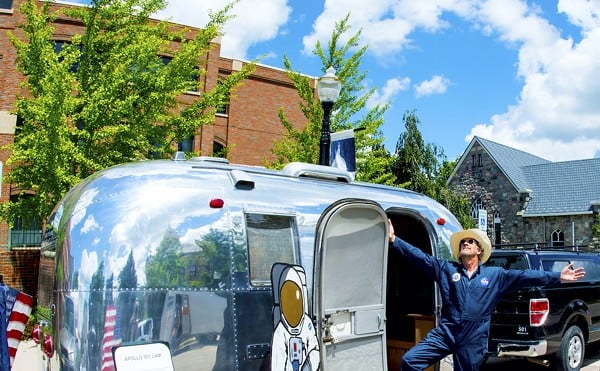There are some landmarks that are so inherently Cincinnati that we can't picture a time before they existed. From the Roebling Bridge to Fountain Square and Washington Park, many of these Queen City spots have been around for over 100 — and some nearly 200 — years. And while some landmarks look much like how Cincinnatians of yesteryear would have seen them, change touches everything, and there are other places that only live in memories and photographs — photographs that will live on thanks to archives like those of the Cincinnati Public Library, which supplied these pictures.
Keep scrolling to see glimpses of Cincinnati's history and what some of our favorite landmarks looked like in the past.
Go Back in Time With These Historic Photos of Cincinnati's Landmarks
By Katherine Barrier on Thu, Aug 24, 2023 at 3:57 pm
Scroll down to view images
Page 1 of 2

John A. Roebling Suspension Bridge, 1867
At first glance it might appear the Roebling Bridge is just a smaller-scale model of the massive Brooklyn Bridge, but that’s not the case. The Roebling, which connects downtown Cincinnati to Covington, is actually the older (and, in our opinion, cooler) sibling to the Brooklyn Bridge, both having been designed and built by John A. Roebling. Construction on the Roebling was completed in 1866 and, at the time, it was the longest suspension bridge in the world. Construction on the Brooklyn Bridge wasn’t completed until 1883.
At first glance it might appear the Roebling Bridge is just a smaller-scale model of the massive Brooklyn Bridge, but that’s not the case. The Roebling, which connects downtown Cincinnati to Covington, is actually the older (and, in our opinion, cooler) sibling to the Brooklyn Bridge, both having been designed and built by John A. Roebling. Construction on the Roebling was completed in 1866 and, at the time, it was the longest suspension bridge in the world. Construction on the Brooklyn Bridge wasn’t completed until 1883.
1 of 29
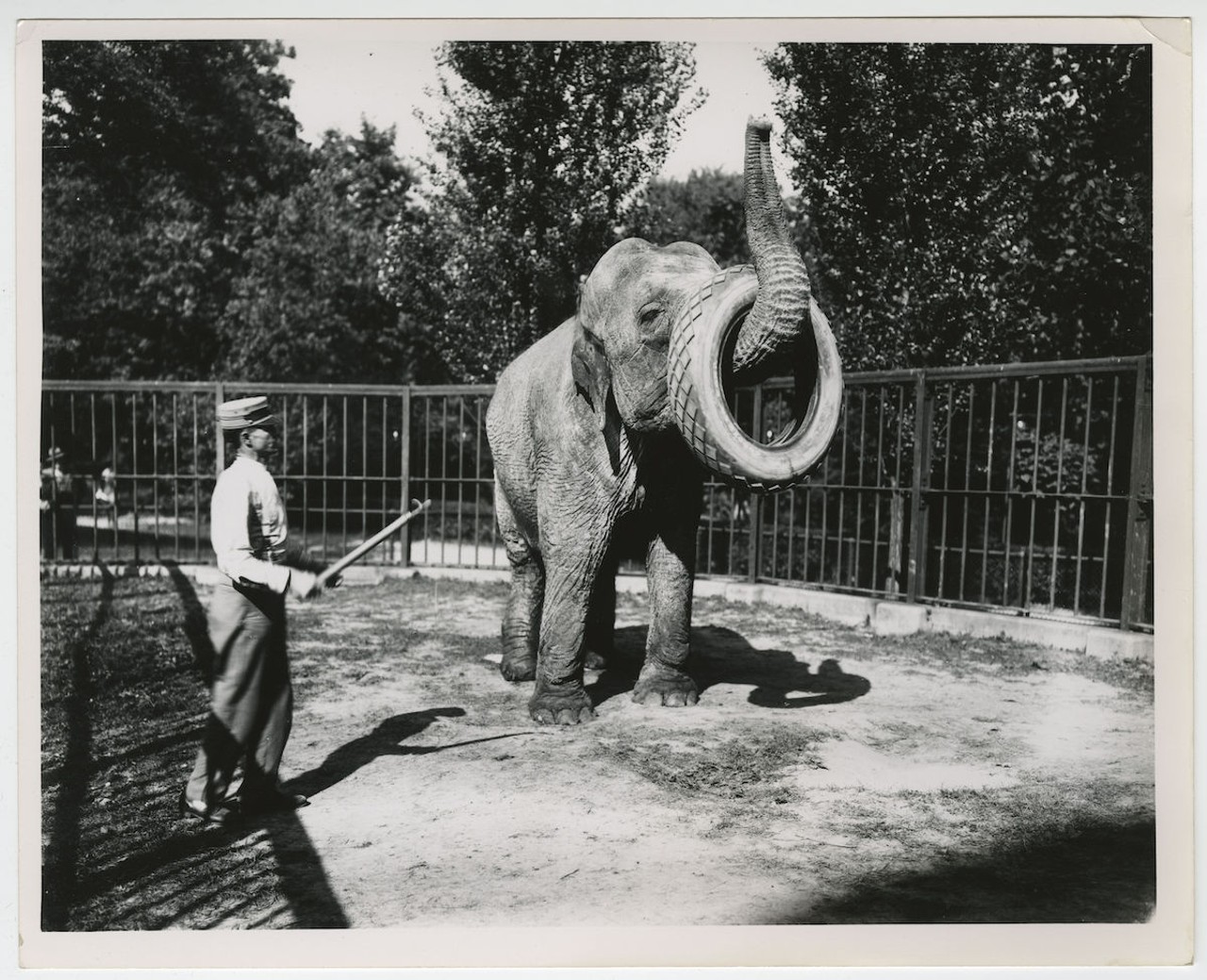
Elephant performing tricks at the Cincinnati Zoo, date unknown
2 of 29

Panda at the Cincinnati Zoo, 1988
In 1988, the Cincinnati Zoo & Botanical Gardens hosted a visiting panda bear, Chia Chia, who was stopping over for three months when he was being moved from a zoo in London to one in Mexico City, according to an article from the New York Times at the time. After his arrival, the zoo had to close the exhibit for at least five days because Chia Chia was homesick. Chia Chia left the zoo at the end of November that year, and while the zoo said his overall stay was a success, they were disappointed he didn't generate more money and crowds, according to this 1988 article.
In 1988, the Cincinnati Zoo & Botanical Gardens hosted a visiting panda bear, Chia Chia, who was stopping over for three months when he was being moved from a zoo in London to one in Mexico City, according to an article from the New York Times at the time. After his arrival, the zoo had to close the exhibit for at least five days because Chia Chia was homesick. Chia Chia left the zoo at the end of November that year, and while the zoo said his overall stay was a success, they were disappointed he didn't generate more money and crowds, according to this 1988 article.
3 of 29
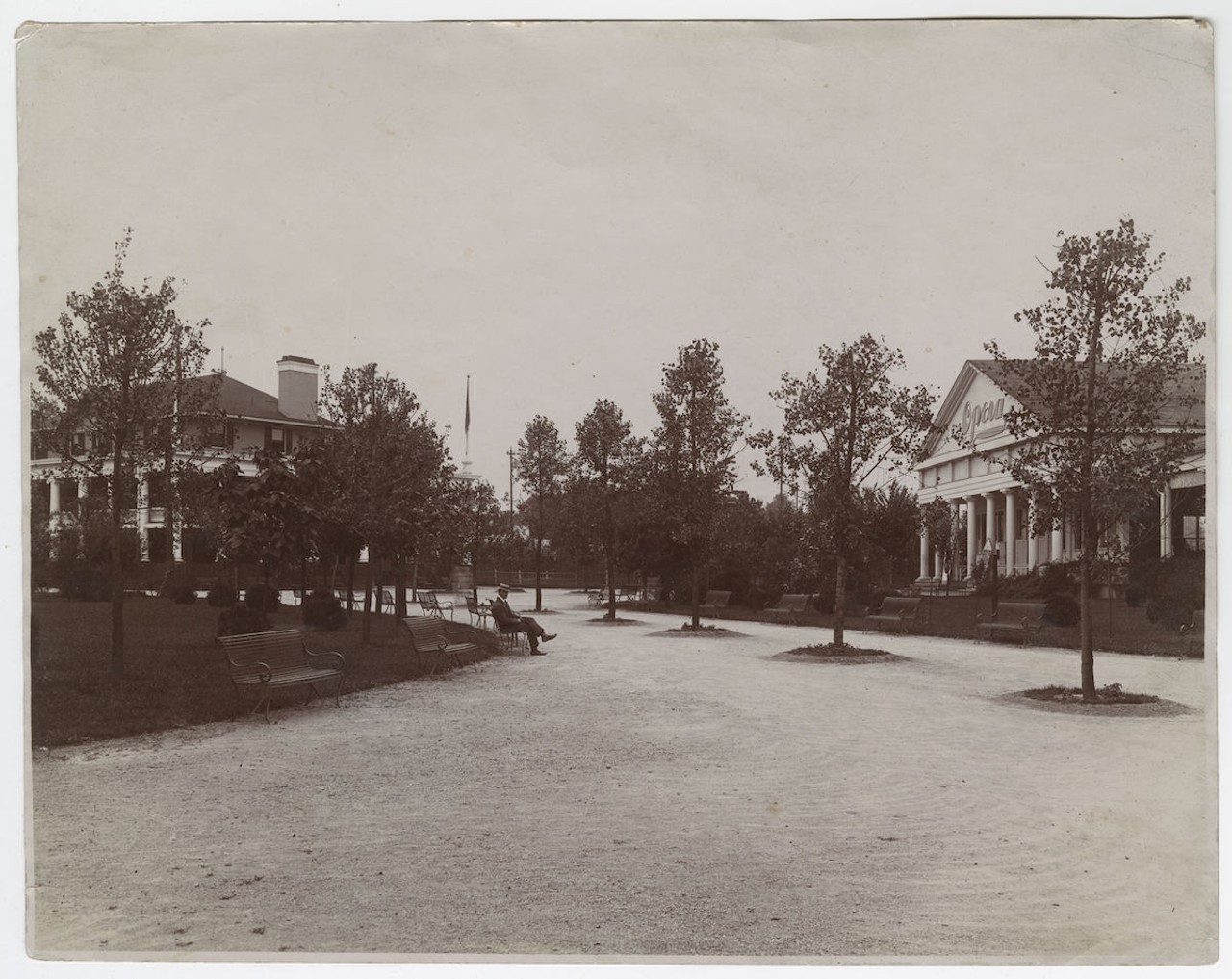
Photo: Courtesy of Cincinnati Public Library's Genealogy and Local History Department
Cincinnati Zoo showing the opera pavilion at the right, 1920
From 1920 to 1972, the Cincinnati Summer Opera performed in this open-air pavilion. The performances were broadcast by NBC Radio, and, at its peak, the opera put on 18 productions over 61 performances in its 10-week season. The zoo performances also saw a number of now-famous opera singers, including Beverly Sills, James Morris, Norman Treigle, Sherrrill Milnes, Roberta Peters and Montserrat Caballé, according to Cincinnati Opera.
From 1920 to 1972, the Cincinnati Summer Opera performed in this open-air pavilion. The performances were broadcast by NBC Radio, and, at its peak, the opera put on 18 productions over 61 performances in its 10-week season. The zoo performances also saw a number of now-famous opera singers, including Beverly Sills, James Morris, Norman Treigle, Sherrrill Milnes, Roberta Peters and Montserrat Caballé, according to Cincinnati Opera.
4 of 29
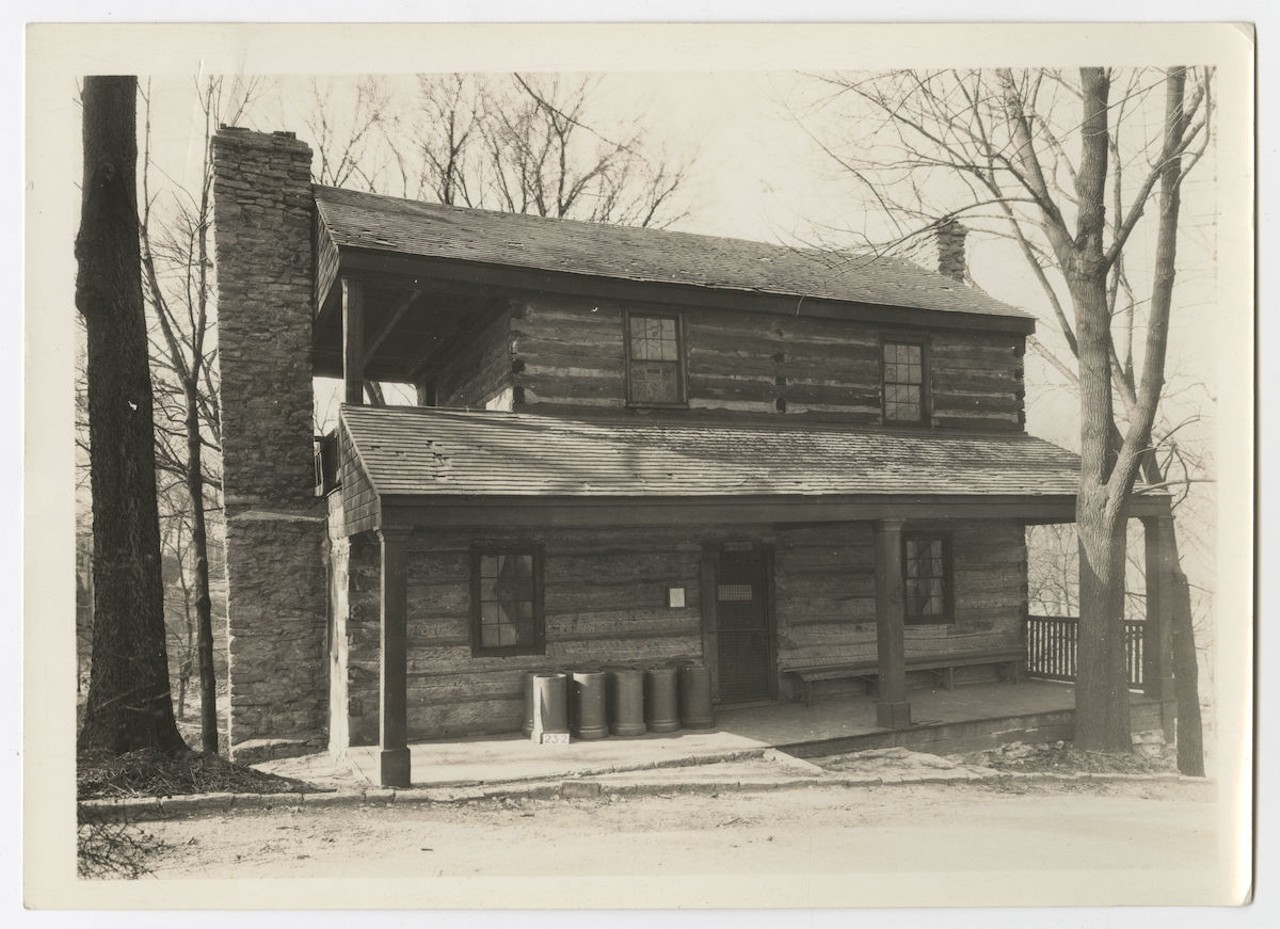
Kemper log house, date unknown
Built in 1804 by Rev. James Kemper, this log house was originally located on what's now Kemper Lane near McMillan Street in Walnut Hills, and it's one of the oldest remaining houses built in Cincinnati. It was relocated to the Cincinnati Zoo in 1912 or 1913 and moved again in 1982 to Sharon Woods' Heritage Village, where you can see it to this day.
Built in 1804 by Rev. James Kemper, this log house was originally located on what's now Kemper Lane near McMillan Street in Walnut Hills, and it's one of the oldest remaining houses built in Cincinnati. It was relocated to the Cincinnati Zoo in 1912 or 1913 and moved again in 1982 to Sharon Woods' Heritage Village, where you can see it to this day.
5 of 29

Fountain Square in downtown Cincinnati, 1910. Photo by Young & Carl
Fountain Square's long been regarded as the heart of Cincinnati. It was gifted to the city by American hardware magnate Henry Probasco in memory of his business partner and brother-in-law, Tyler Davidson, whom the fountain is named for. The square once existed as an island down Fifth Street but was renovated in the '70s to widen the plaza and change the flow of traffic. It was renovated and redesigned again in the early 2000s to attract more visitors and serve as a hub for events downtown.
Fountain Square's long been regarded as the heart of Cincinnati. It was gifted to the city by American hardware magnate Henry Probasco in memory of his business partner and brother-in-law, Tyler Davidson, whom the fountain is named for. The square once existed as an island down Fifth Street but was renovated in the '70s to widen the plaza and change the flow of traffic. It was renovated and redesigned again in the early 2000s to attract more visitors and serve as a hub for events downtown.
6 of 29
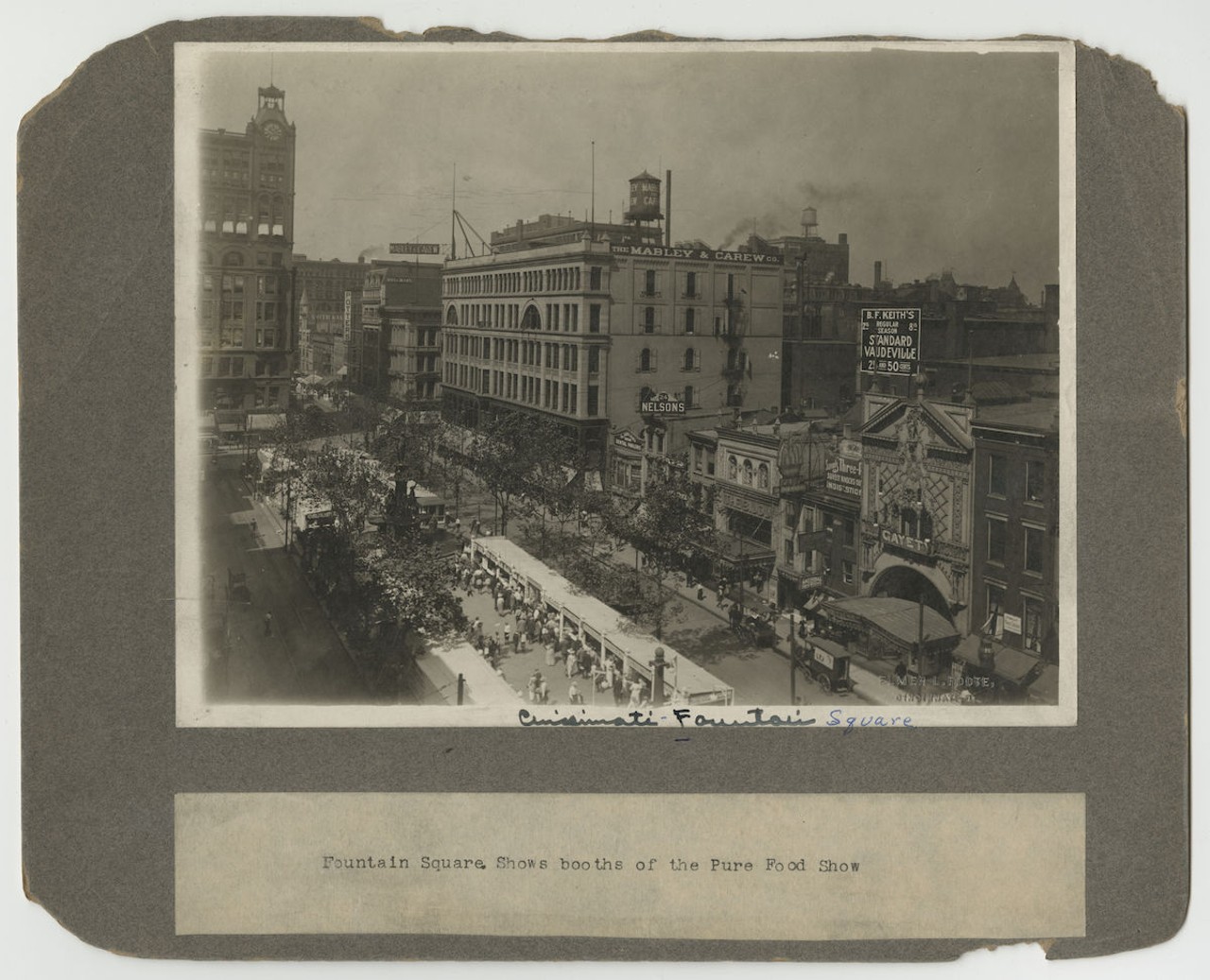
Aerial view of Fountain Square showing booths of the Pure Food Show, circa 1907-1919. Photo by Elmer L. Foote, the Cincinnati Library's staff photographer from 1907-1919
7 of 29
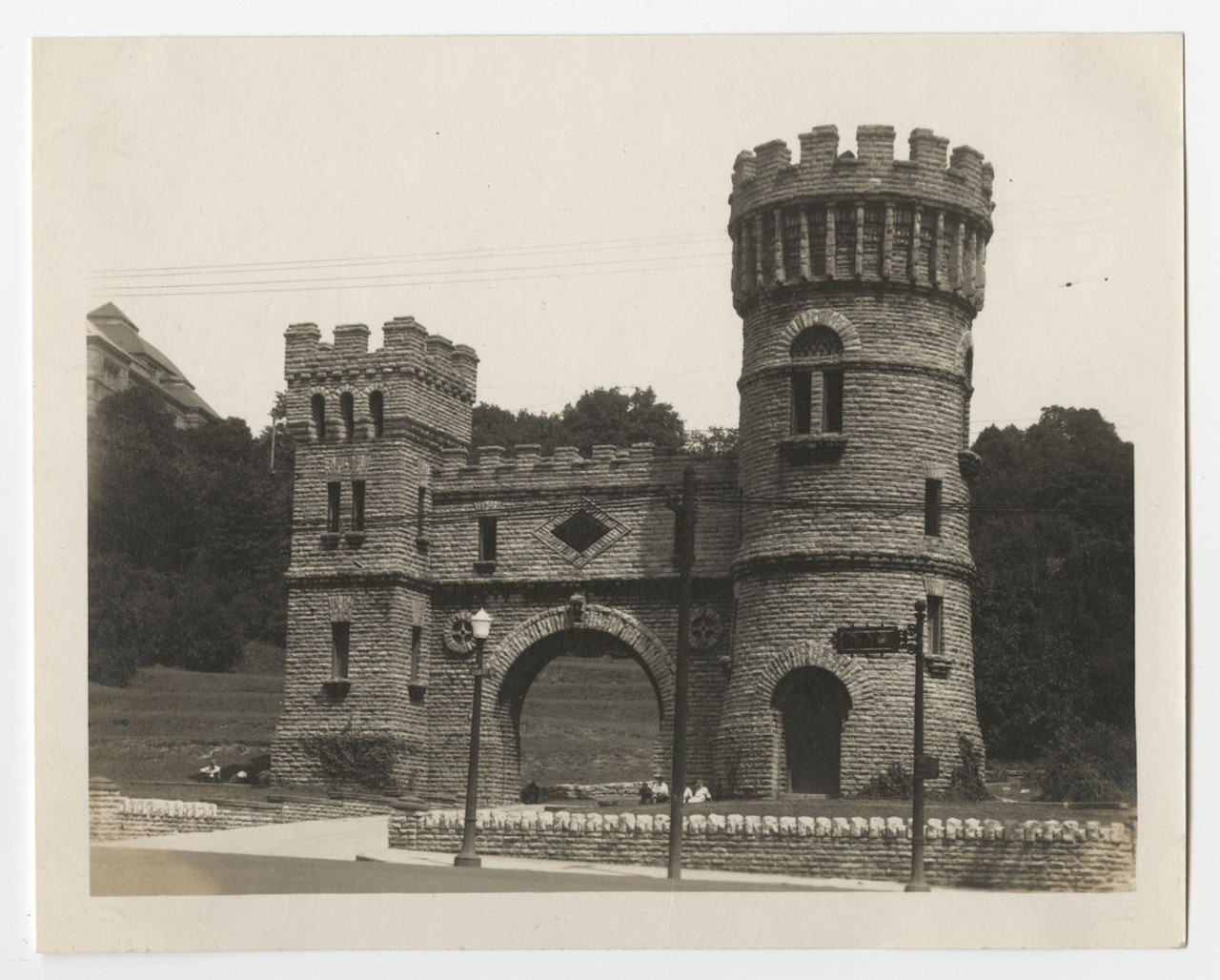
Elsinore gate at the entrance to Eden Park, date unknown
Also called the Elsinore Tower or Elsinore Arch, this building was constructed in 1883 as Cincinnati Water Works' valve house. It's said that its design was inspired by Elsinore Castle, or Kronborg Castle, in William Shakespeare's tragedy Hamlet.
Also called the Elsinore Tower or Elsinore Arch, this building was constructed in 1883 as Cincinnati Water Works' valve house. It's said that its design was inspired by Elsinore Castle, or Kronborg Castle, in William Shakespeare's tragedy Hamlet.
8 of 29
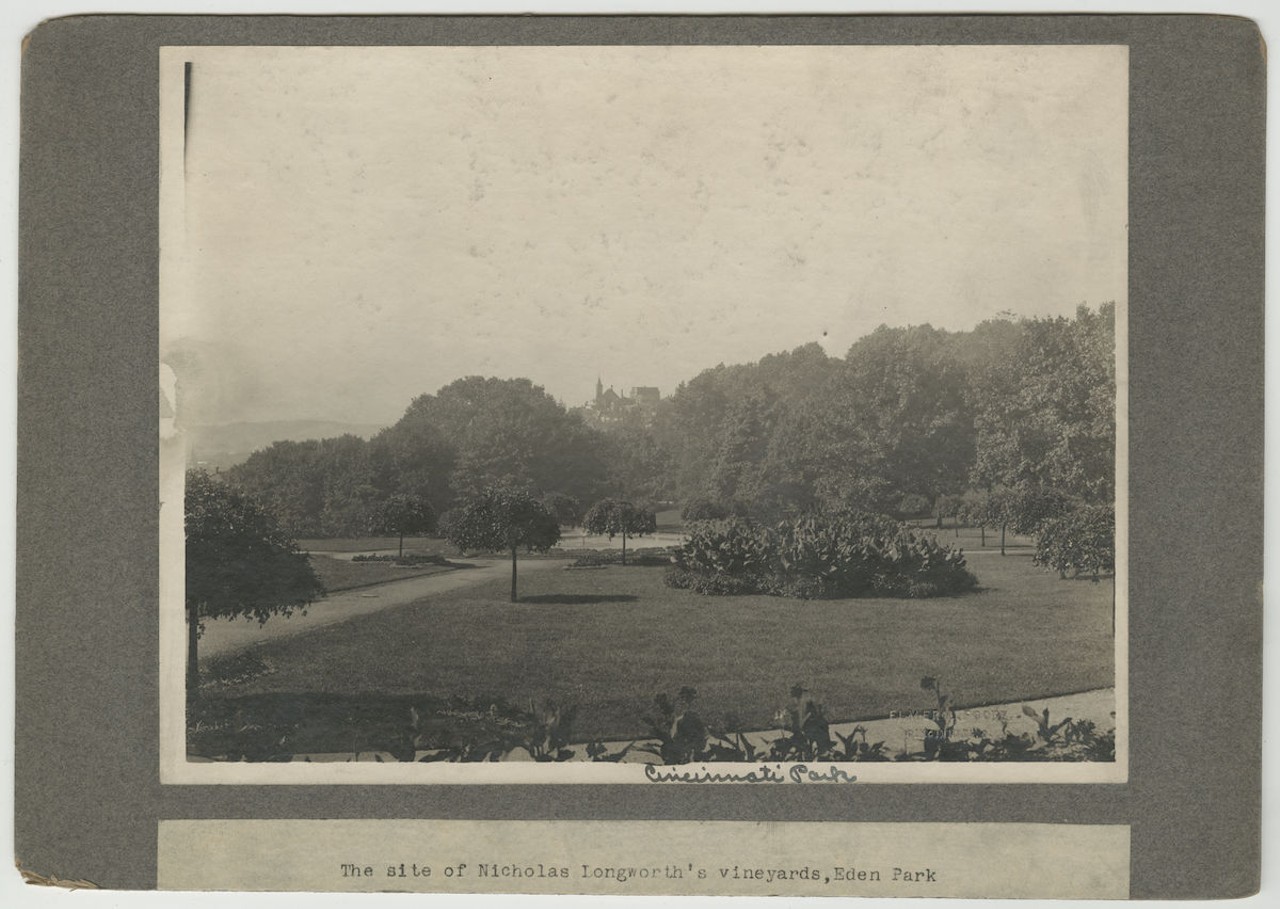
Former site of Nicholas Longworth's vineyards in Eden Park, circa 1907-1919
Nicholas Longworth was a prominent Cincinnati lawyer, banker and real estate speculator who moved from New Jersey to Cincinnati in 1804. He was also a well-known winemaker who owned a vineyard in what's now Eden Park. The city of Cincinnati bought the vineyard — which Longworth called The Garden of Eden — in 1869 and built a 12-acre, 96-gallon reservoir.
Nicholas Longworth was a prominent Cincinnati lawyer, banker and real estate speculator who moved from New Jersey to Cincinnati in 1804. He was also a well-known winemaker who owned a vineyard in what's now Eden Park. The city of Cincinnati bought the vineyard — which Longworth called The Garden of Eden — in 1869 and built a 12-acre, 96-gallon reservoir.
9 of 29
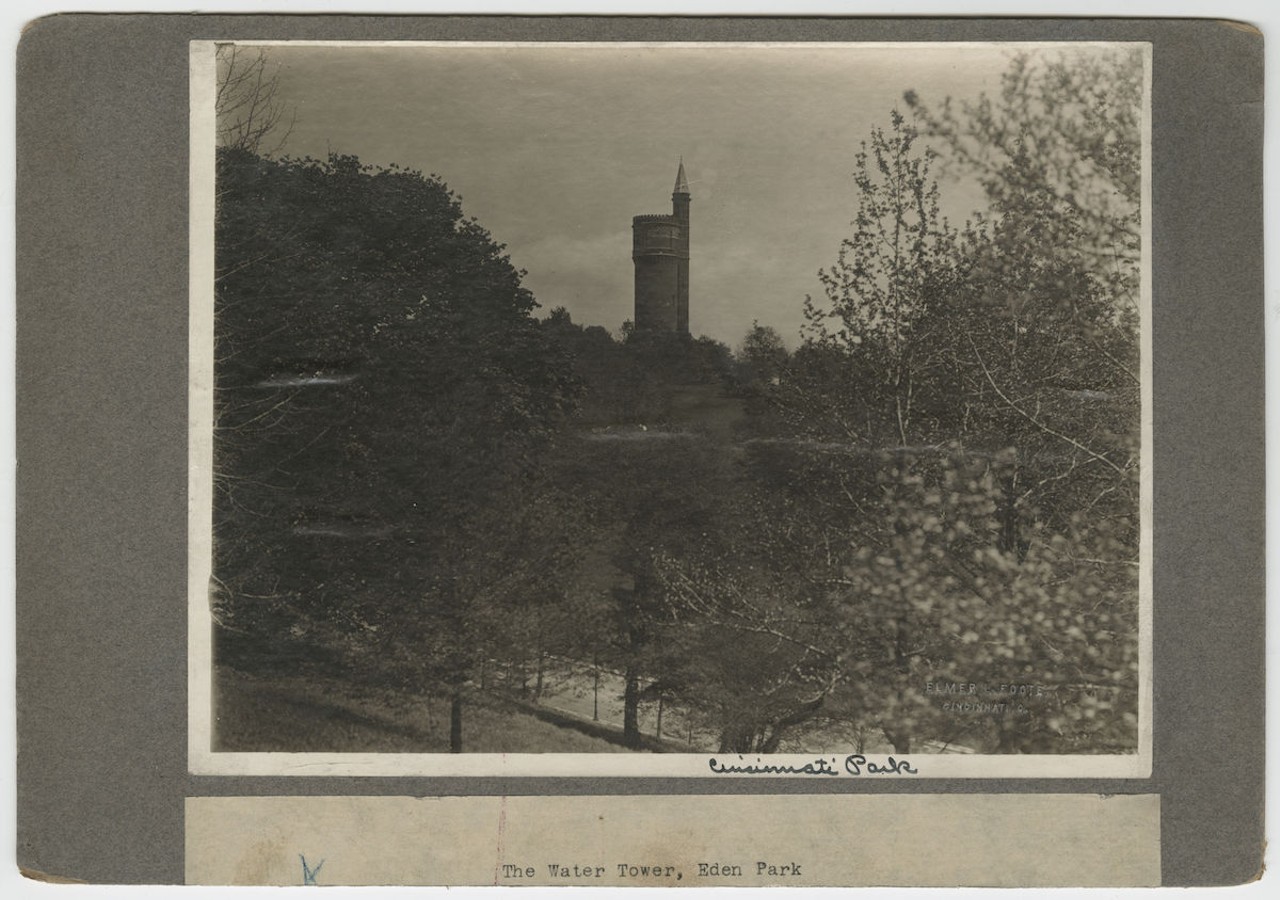
Water tower in Eden Park, circa 1907-1919
The Eden Park Standpipe, designed by Cincinnati architect Samuel Hannaford, was completed in 1894, following the city's construction of the Eden Park reservoir. Its purpose was to provide Walnut Hills residents with sufficient water pressure. Eden Park Station No. 7 pumped water from the Ohio River into the standpipe, and then it flowed out of it into three mains. The standpipe is obsolete now, but in 1980, it was added to the National Register of Historic Places.
The Eden Park Standpipe, designed by Cincinnati architect Samuel Hannaford, was completed in 1894, following the city's construction of the Eden Park reservoir. Its purpose was to provide Walnut Hills residents with sufficient water pressure. Eden Park Station No. 7 pumped water from the Ohio River into the standpipe, and then it flowed out of it into three mains. The standpipe is obsolete now, but in 1980, it was added to the National Register of Historic Places.
10 of 29
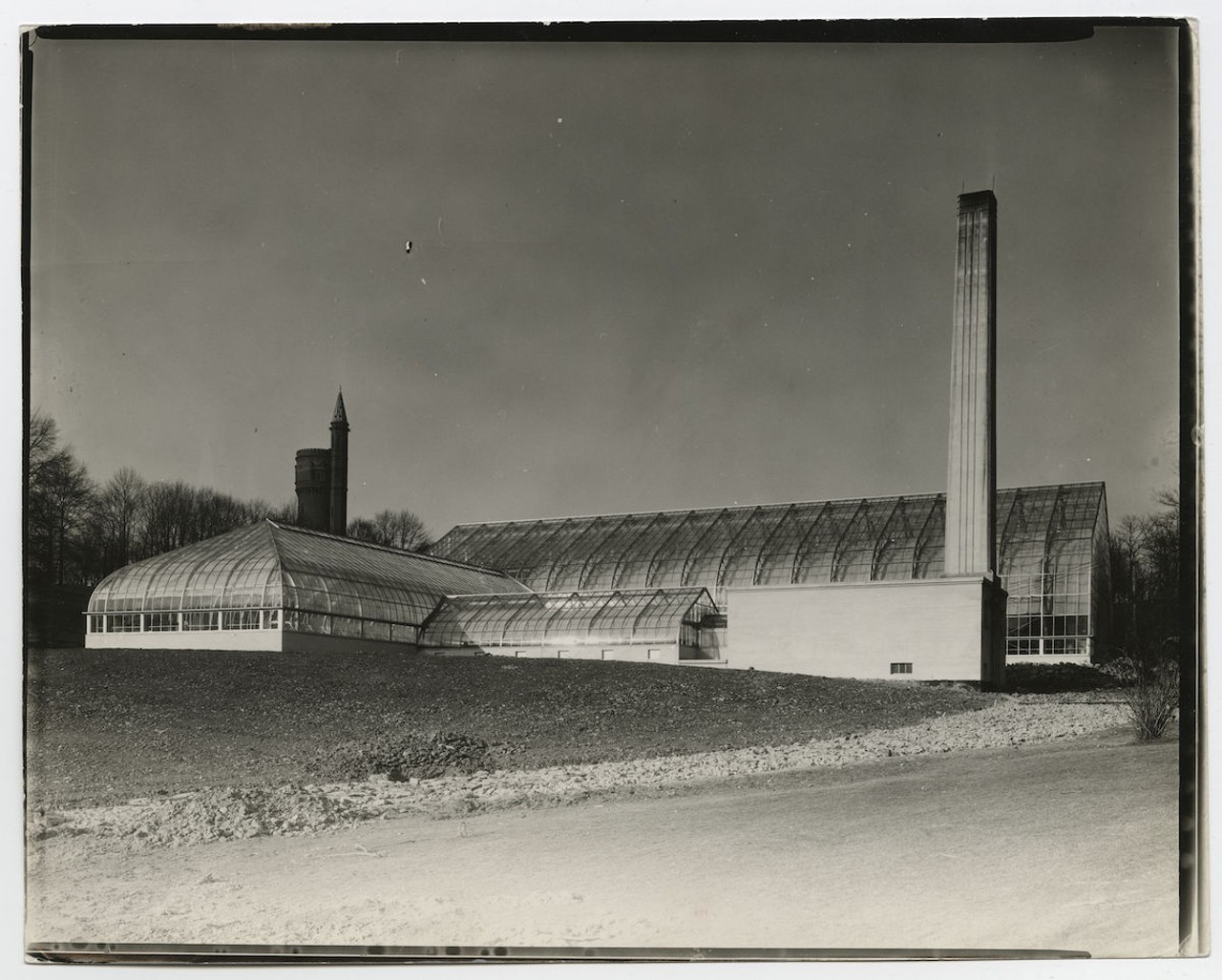
Krohn Conservatory under construction, circa 1933
This Art Deco beauty was built in 1933, replacing the smaller greenhouses in Eden Park that had been there since 1894. It was called the Eden Park Greenhouse until 1937 when it was renamed in honor of Board of Park Commissioner Irwin M. Krohn.
This Art Deco beauty was built in 1933, replacing the smaller greenhouses in Eden Park that had been there since 1894. It was called the Eden Park Greenhouse until 1937 when it was renamed in honor of Board of Park Commissioner Irwin M. Krohn.
11 of 29
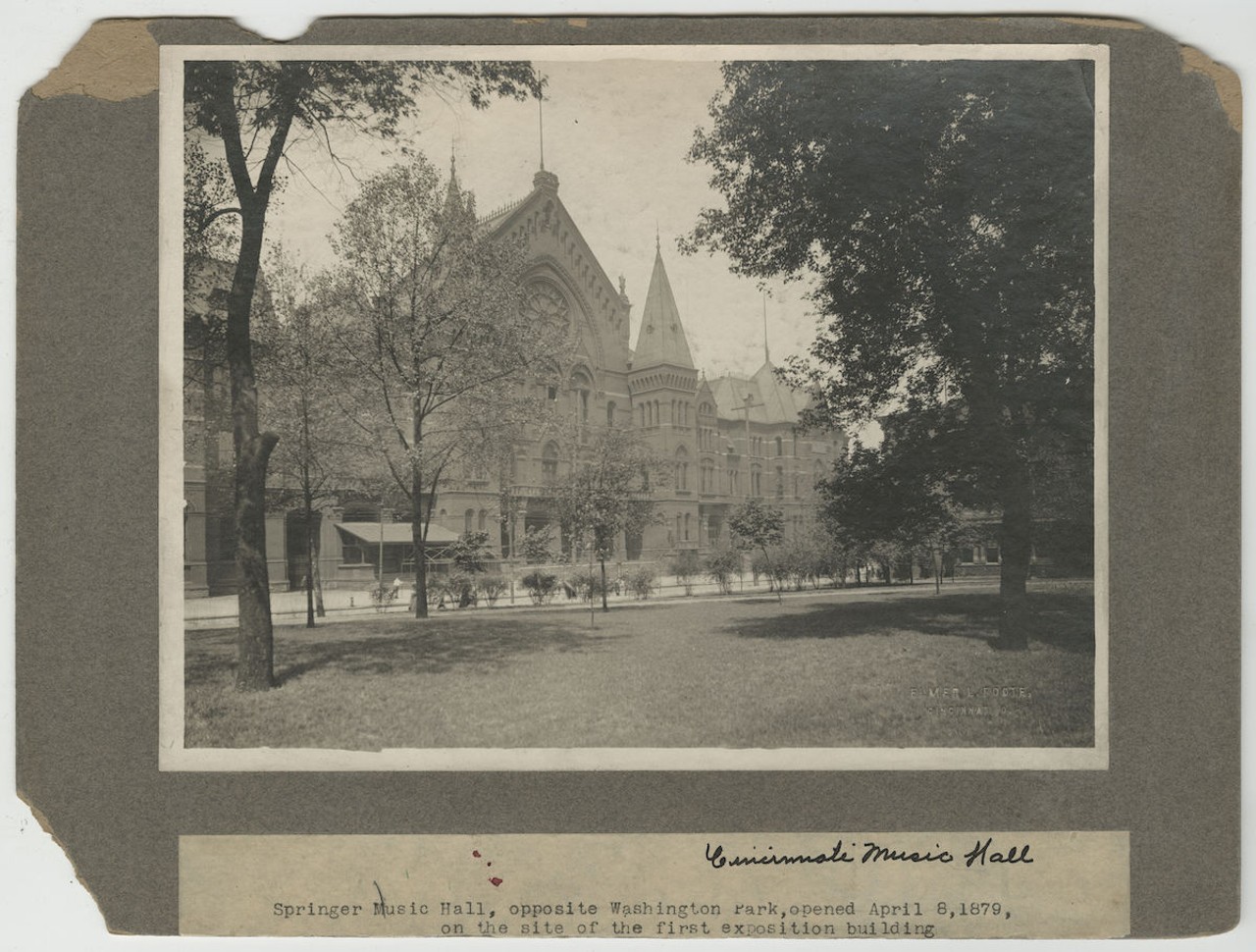
Cincinnati Music Hall, circa 1907-1919. Photo by Elmer L. Foote, the Cincinnati Library's staff photographer from 1907-1919
Cincinnati's Music Hall was designed by Cincinnati architect Samuel Hannaford and dedicated in 1878. It was originally designed to be both an arts performance center (in the middle building, Springer Hall) and as a convention center, with exhibitions in both the wing buildings.
Cincinnati's Music Hall was designed by Cincinnati architect Samuel Hannaford and dedicated in 1878. It was originally designed to be both an arts performance center (in the middle building, Springer Hall) and as a convention center, with exhibitions in both the wing buildings.
12 of 29
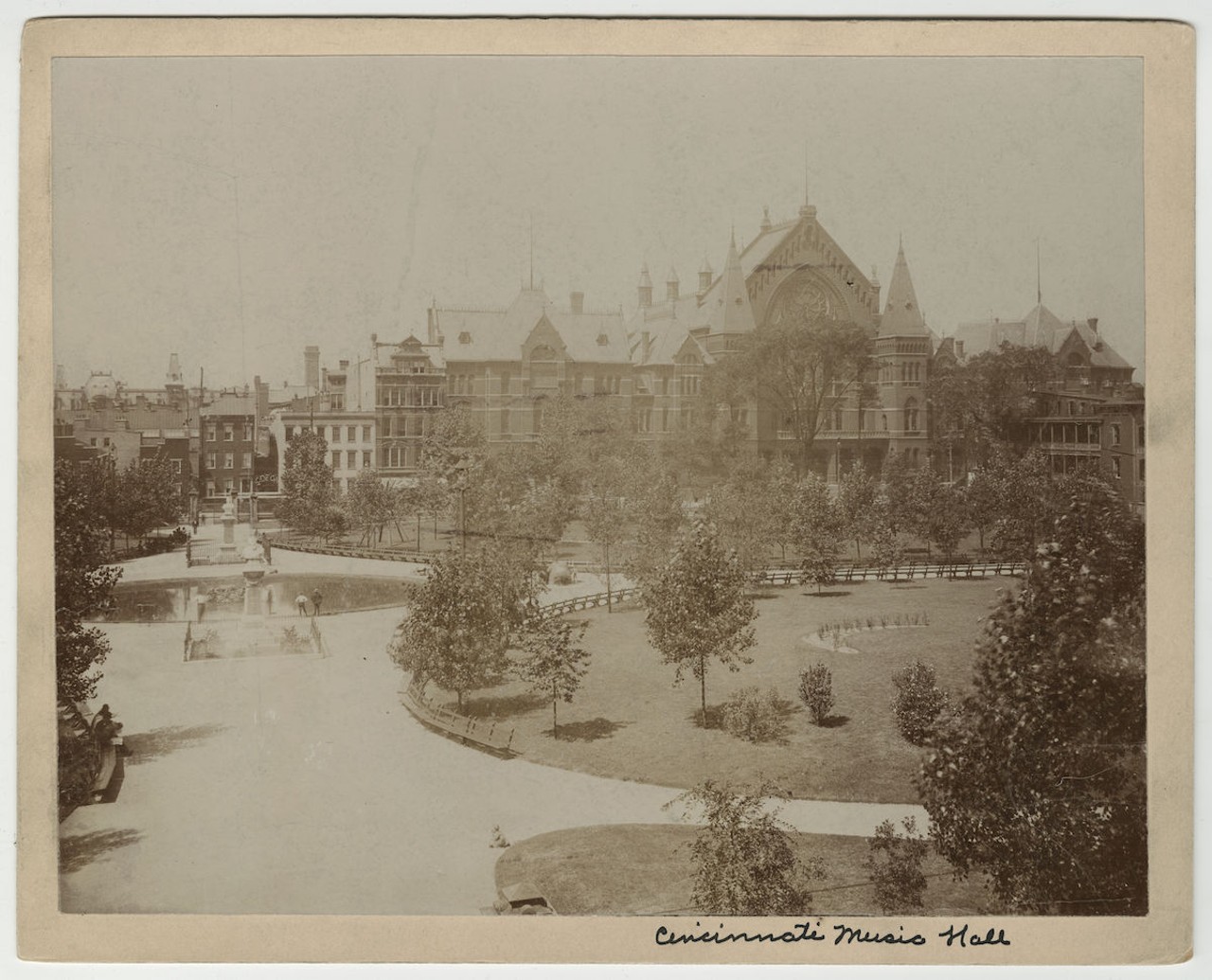
Washington Park and Music Hall, date unknown
Washington Park was built by the city in the 1860s and was home to lots of walkways, bandstands, a fountain, a pond and swimming pool. The park began to fall into disrepair starting after the Great Depression, a trend that continued for several decades until the city began renovations in 2011, restoring it to its former glory.
Washington Park was built by the city in the 1860s and was home to lots of walkways, bandstands, a fountain, a pond and swimming pool. The park began to fall into disrepair starting after the Great Depression, a trend that continued for several decades until the city began renovations in 2011, restoring it to its former glory.
13 of 29
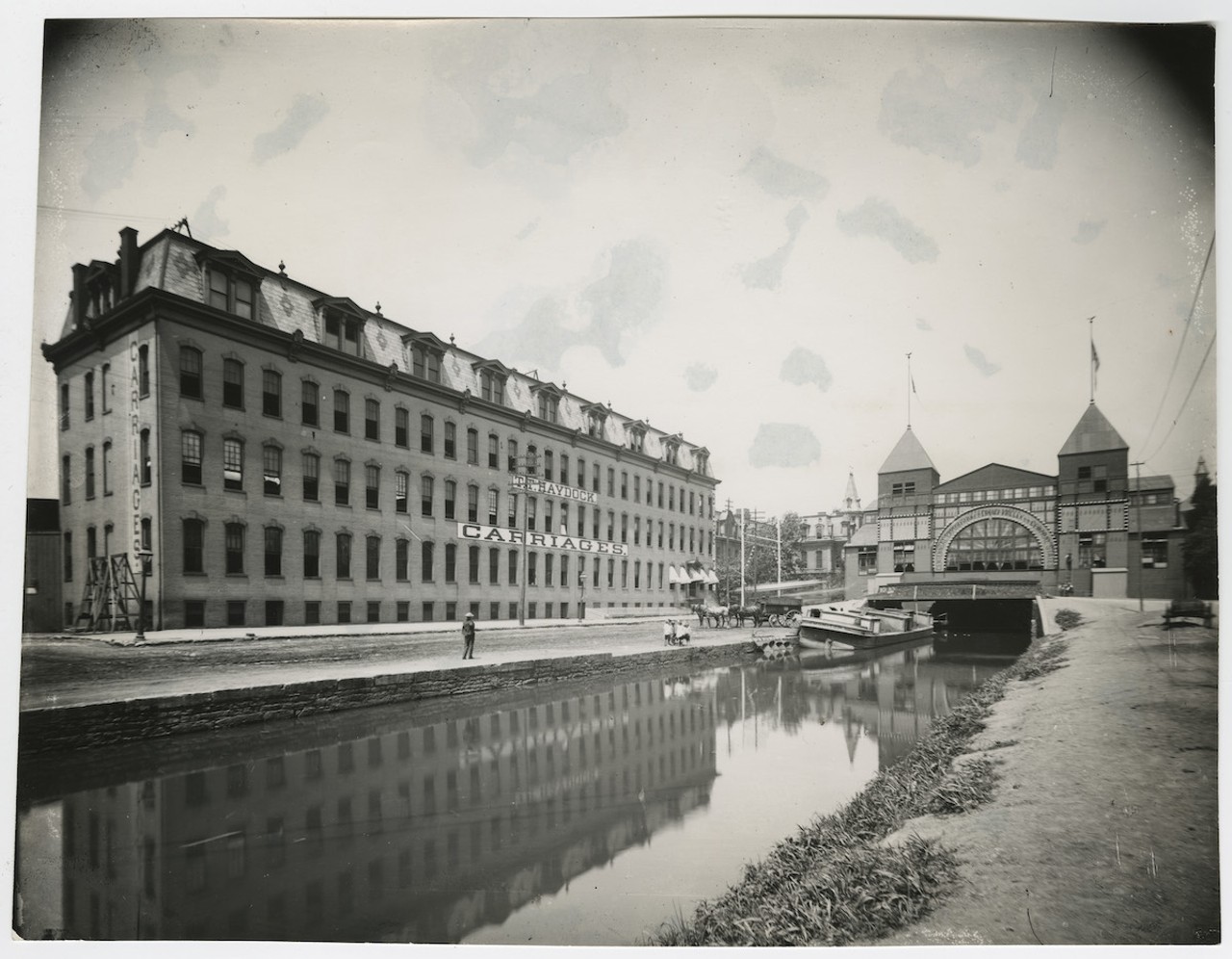
Canal entering machinery building at Music Hall during the Centennial Exposition, 1888
They called it the “World’s Fair of Cincinnati.” When the Centennial Exposition of the Ohio Valley and Central States first began to enthrall onlookers 130 years ago, way back in 1888, it was nominally slated to celebrate the anniversary of the City of Cincinnati’s founding. More to the truth, this incredibly lavish year-long exposition gave cause to spotlight the growing metro’s industry, commerce and rampant technological progress.
Unheard-of electric lights were seen everywhere; exhibit halls could be open — and illuminated — late into the night. Gondolas were imported from Venice, Italy, along with the necessary gondoliers to provide voyages along the Erie Canal (what’s now Central Parkway). For laughs, they even hauled in President Ulysses S. Grant’s Point Pleasant home. Really.
They called it the “World’s Fair of Cincinnati.” When the Centennial Exposition of the Ohio Valley and Central States first began to enthrall onlookers 130 years ago, way back in 1888, it was nominally slated to celebrate the anniversary of the City of Cincinnati’s founding. More to the truth, this incredibly lavish year-long exposition gave cause to spotlight the growing metro’s industry, commerce and rampant technological progress.
Unheard-of electric lights were seen everywhere; exhibit halls could be open — and illuminated — late into the night. Gondolas were imported from Venice, Italy, along with the necessary gondoliers to provide voyages along the Erie Canal (what’s now Central Parkway). For laughs, they even hauled in President Ulysses S. Grant’s Point Pleasant home. Really.
14 of 29

Streetcar on Elm Street in front of Music Hall during the Centennial Exposition, 1888
The ostentatious festival dominated city life for most of the year in 1888: planning, execution, excitement, crowds, tear-downs. It ran for more than 100 days, from July 4 to Nov. 8, open 9 a.m.-10 p.m. every day except Sunday. Cincinnatians subscribed for tickets in excess of $1 million, a tidy sum in that era; season tickets cost a whopping $5, and adult daily admission was 25 cents.
All in all, the fest featured 47 acres of unbridled play and 950,000 square feet of exhibition space.
The ostentatious festival dominated city life for most of the year in 1888: planning, execution, excitement, crowds, tear-downs. It ran for more than 100 days, from July 4 to Nov. 8, open 9 a.m.-10 p.m. every day except Sunday. Cincinnatians subscribed for tickets in excess of $1 million, a tidy sum in that era; season tickets cost a whopping $5, and adult daily admission was 25 cents.
All in all, the fest featured 47 acres of unbridled play and 950,000 square feet of exhibition space.
15 of 29
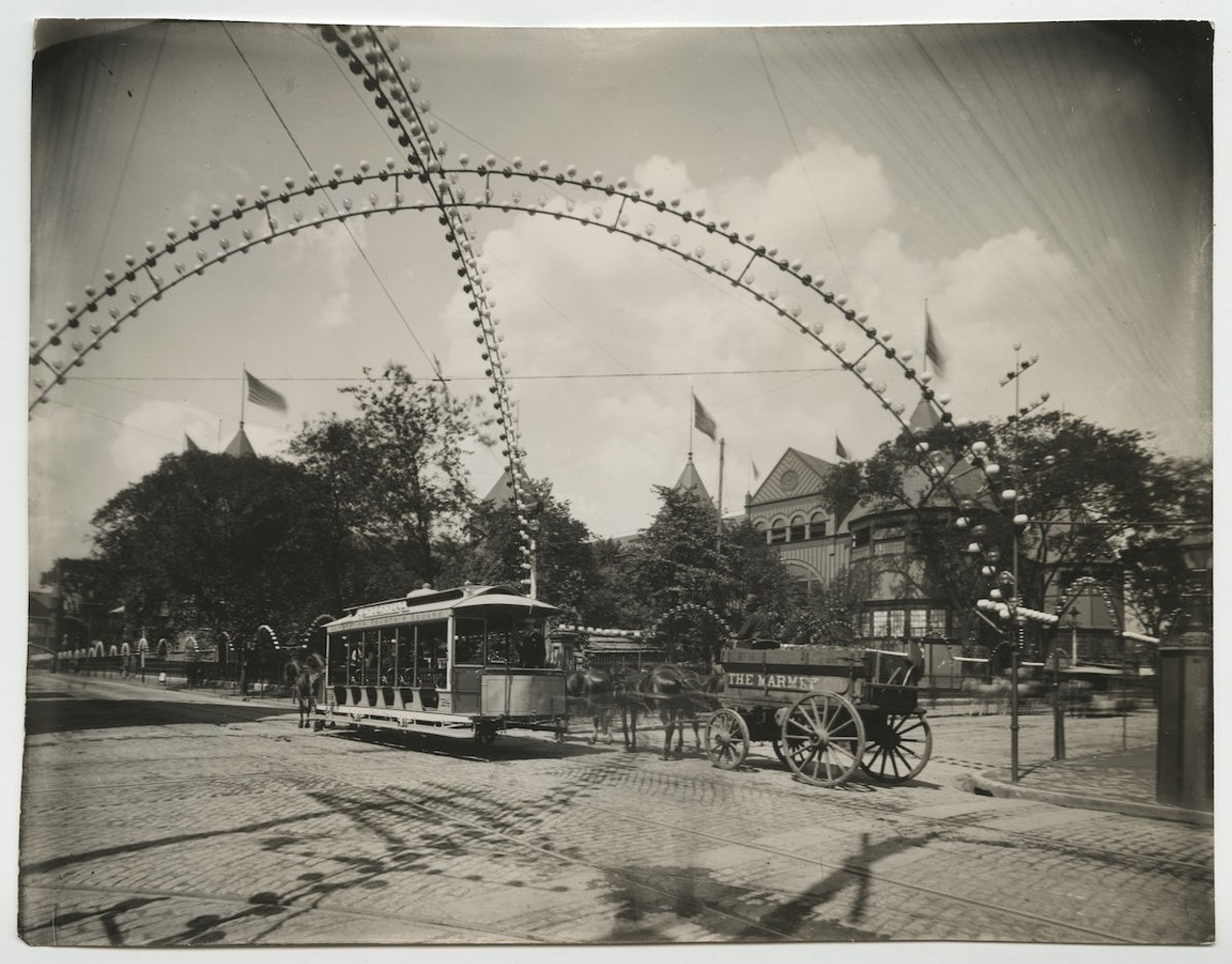
Street car and wagon traffic at Washington Park during the Centennial Exposition, 1888
16 of 29
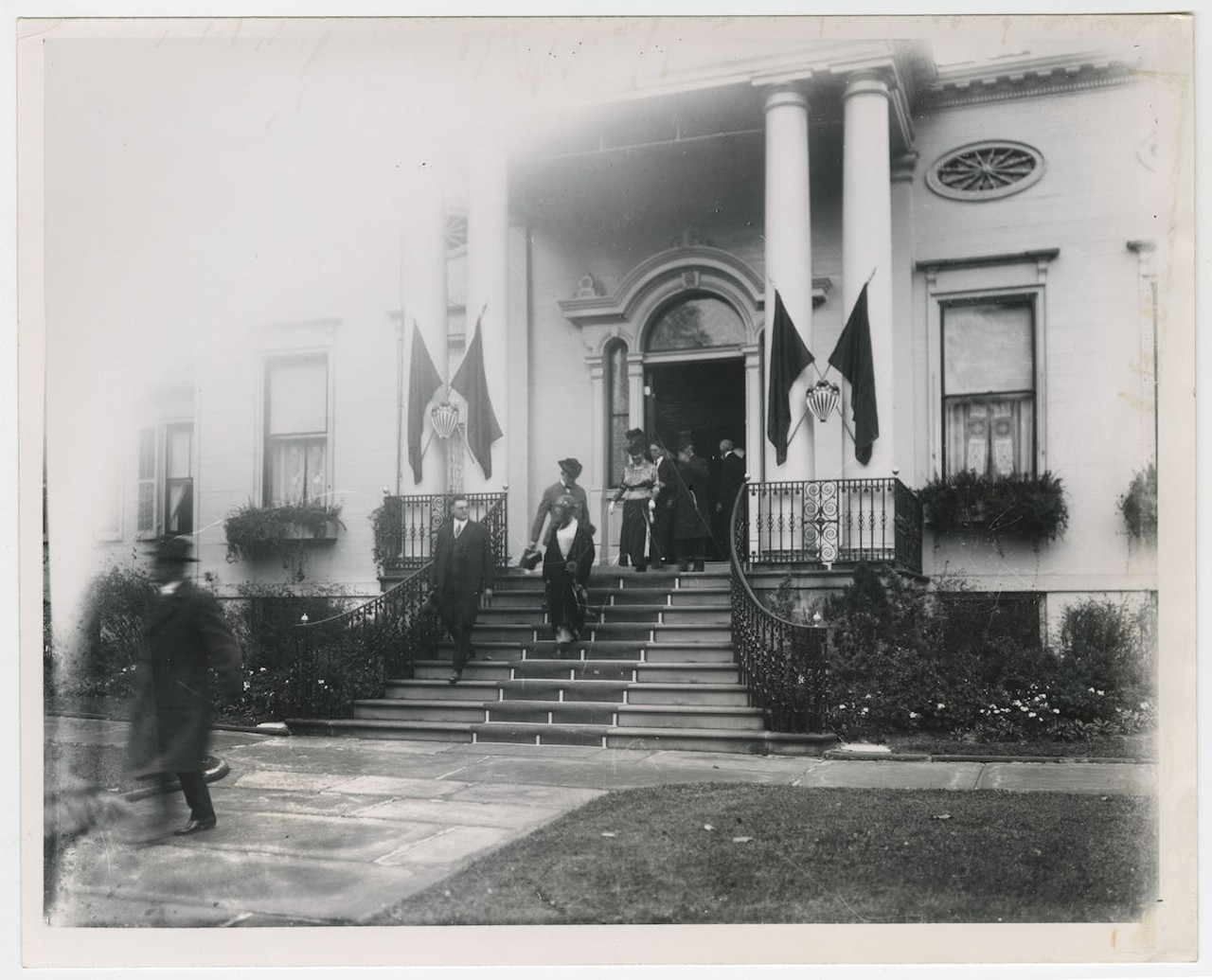
People exiting Taft house, now the Taft Museum of Art, date unknown
17 of 29
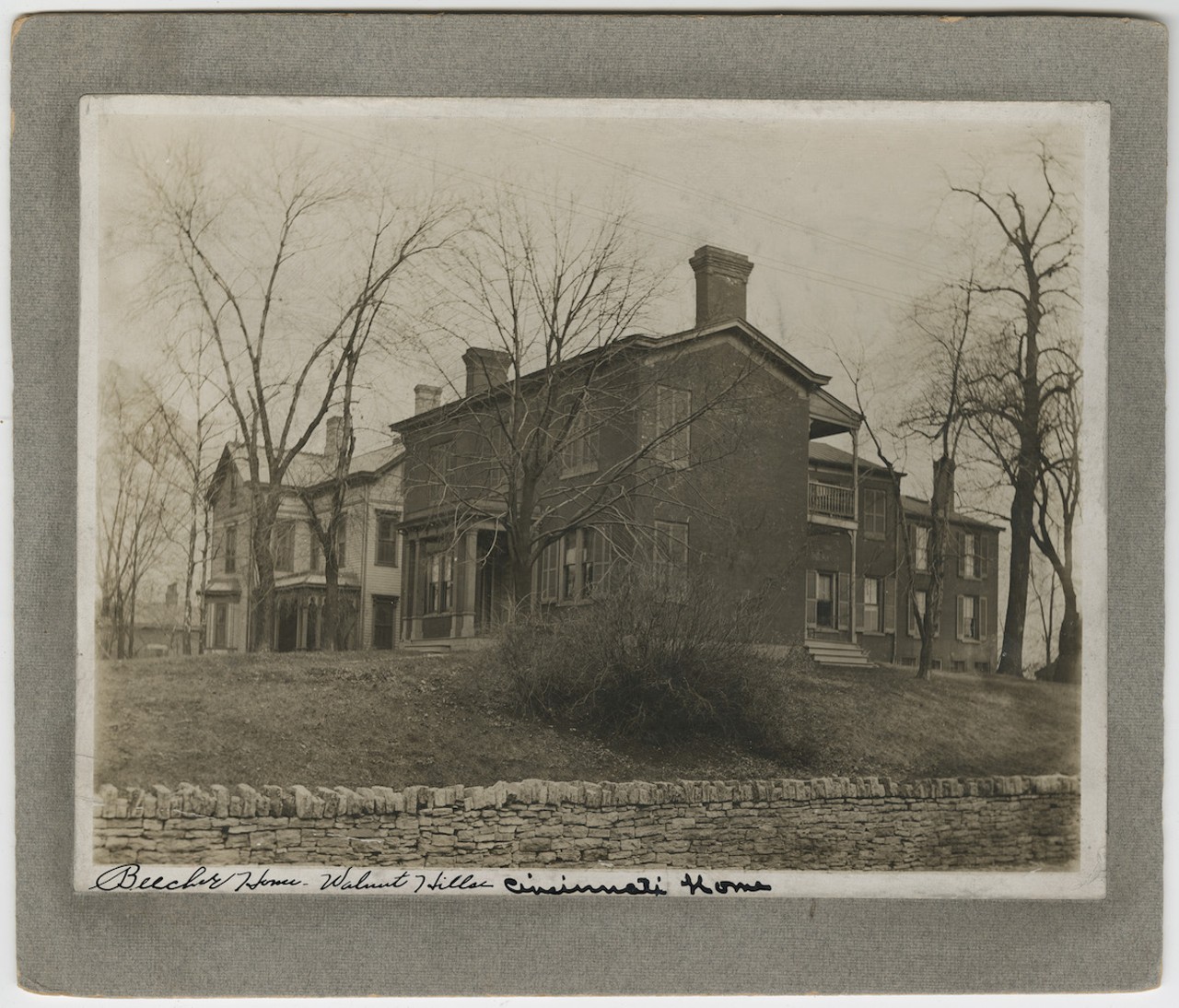
Harriet Beecher Stowe's home, 1900
2950 Gilbert Ave. in Walnut Hills is most notable as being the home of Harriet Beecher Stowe and the Beecher family in the 1830s. It later became a boarding house and then the Edgemont Inn in the 1930s. In the 1940s, the Harriet Beecher Stowe Home Memorial Association raised the money to buy the home and turn it into a museum honoring Harriet Beecher Stowe.
2950 Gilbert Ave. in Walnut Hills is most notable as being the home of Harriet Beecher Stowe and the Beecher family in the 1830s. It later became a boarding house and then the Edgemont Inn in the 1930s. In the 1940s, the Harriet Beecher Stowe Home Memorial Association raised the money to buy the home and turn it into a museum honoring Harriet Beecher Stowe.
18 of 29
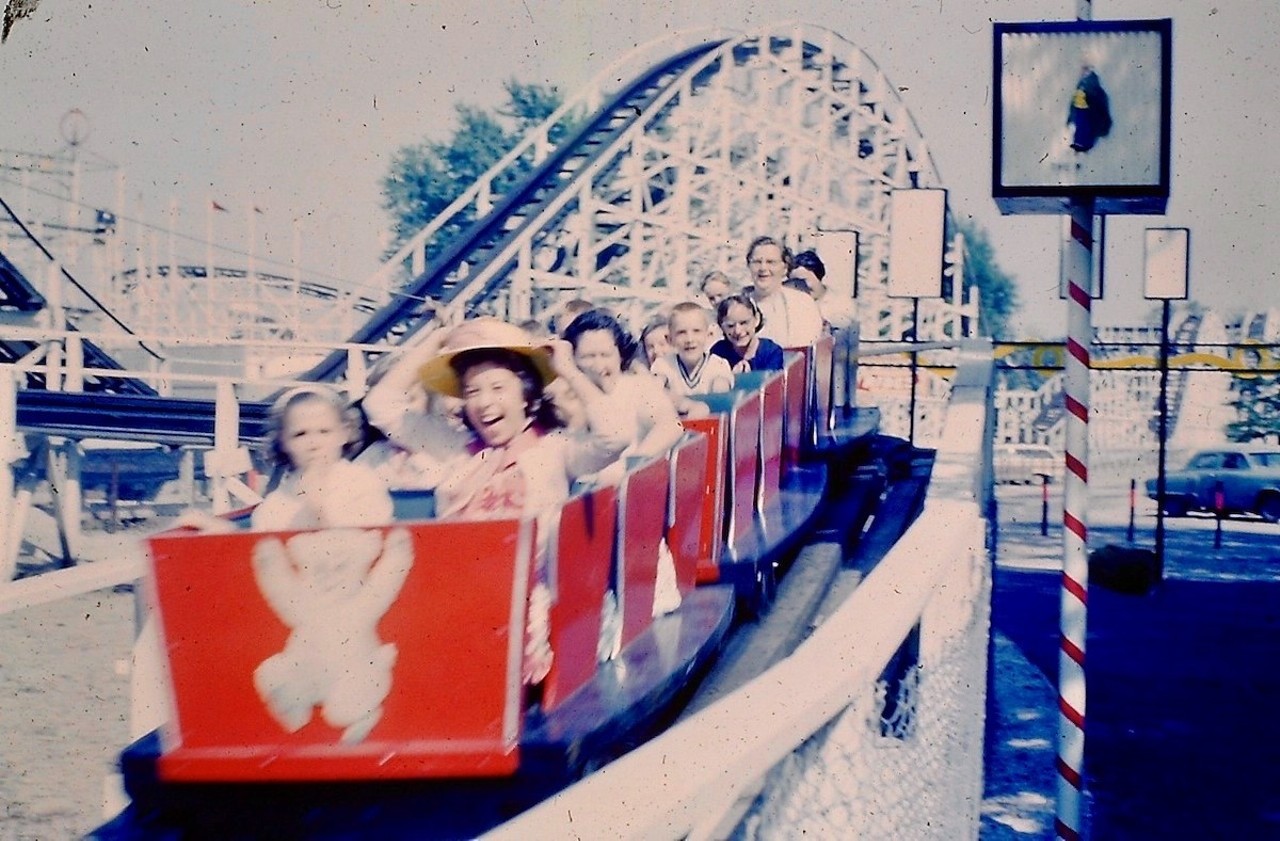
People on a roller coaster at Coney Island, 1954
19 of 29
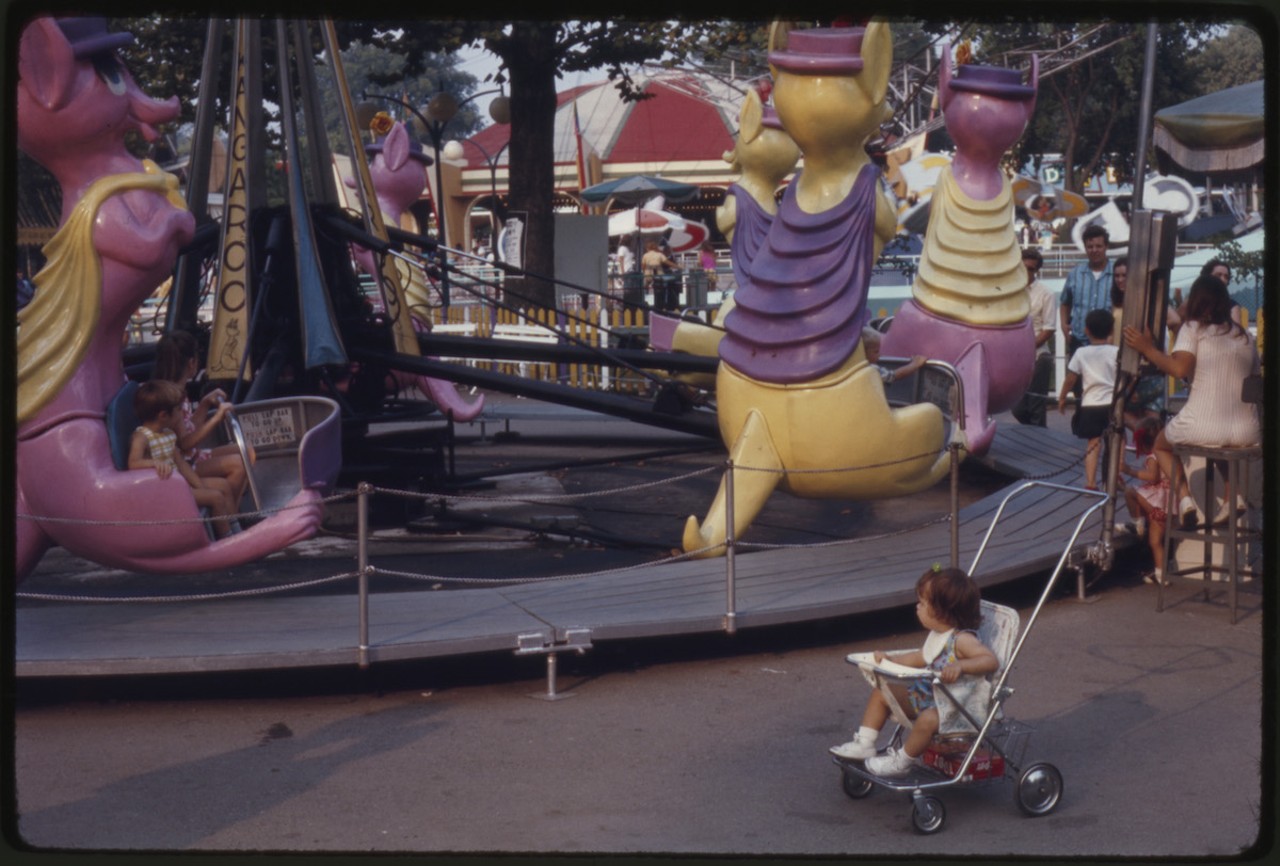
A child in a stroller at Coney Island, 1970
20 of 29
Page 1 of 2
- Local Cincinnati
- News & Opinion
- Arts & Culture
- Things to Do
- Food & Drink
- Music
- Cincinnati in Pictures
- About City Beat
- About Us
- Advertise
- Contact Us
- Work Here
- Big Lou Holdings, LLC
- Cincinnati CityBeat
- Detroit Metro Times
- Louisville LEO Weekly
- St. Louis Riverfront Times
- Sauce Magazine



